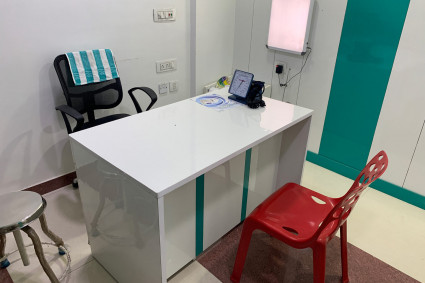
Why Sleep Problems Hit So Hard: Long nights with little sleep drain the day—your mood dips. Work gets harder. Family time feels thin. Sleep issues also raise health risks over time. Yet answers can feel confusing. Is it apnea, insomnia, or restless legs? Which test matters? What steps actually help?
Here’s the good news. Merion neurologist services blend medical tools with plain talk. They break problems into clear steps and set a plan you can follow. Because small changes add up, you learn what to test, what to track, and how to act. Then, you finally see steady sleep return—without guesswork.
1) Merion Neurologist Services: Naming the Problem Clearly
Sleep care starts with a precise name. Is it sleep apnea, chronic insomnia, narcolepsy, REM behavior disorder, or restless legs? A careful history points the way. Then testing confirms it. Because each disorder needs different steps, the correct label saves time. You also learn which risks matter now and which can wait. This calm, staged plan reduces fear and boosts follow-through.
Subheadings that guide the first visit:
What signs matter most?
Snoring, long pauses in breathing, nightly wakeups, vivid dreams with movement, or daytime sleep attacks.
What are the core steps?
Track sleep patterns, order proper tests, start a minor first fix, then review.
When a neurologist services maps symptoms to a precise diagnosis, your next move becomes simple.
2) Testing That Fits the Symptoms
Tests should answer a focused question, not add noise. Some people need an overnight sleep study. Others do a home apnea test or actigraphy. Still others need iron studies, thyroid labs, or medication reviews. The order matters, and the goal is clarity with minimal hassle. After testing, results tie back to a plan you can actually use.
Common Disorders, Tests, and First-Line Care
Disorder Key Sign Typical Test Common Treatment
Obstructive Apnea Loud snoring, pauses Sleep study (lab/home) CPAP, oral device, weight plan
Insomnia Long sleep latency Sleep diary, CBT-I screen CBT-I, stimulus control, sleep window
Restless Legs Night leg urge Ferritin, history Iron repletion, timing meds
Narcolepsy Daytime sleep attacks MSLT after PSG Wake-promoting meds, sleep schedule
Before you test, pause and ask:
- What decision will this test change?
- How will we act on each result?
- When do we recheck?
Then the neurologist links each test to a clear next step.
3) Treating Sleep Apnea Without Chaos
Apnea steals oxygen and shreds sleep depth. First, confirm it. Next, choose a path: CPAP, an oral appliance, or targeted weight steps. Fit matters, so mask style and pressure settings are adjusted over time. Because follow-up prevents backsliding, early check-ins are key. You then track energy, blood pressure, and snoring to measure progress.
“The best device is the one you’ll actually use. Comfort plus data drives success.”
For many families, a neurologist helps turn a difficult diagnosis into a manageable routine. Through clear testing and guided care, these Merion neurologist services restore restful nights and refreshed mornings, making daily life more stable and healthier.
4) Ending the Insomnia Loop
Insomnia loves cycles: worry causes wakefulness, and wakefulness feeds worry. A tight plan breaks the loop. You set a steady wake time, trim late naps, and build a short wind-down. Blue light drops before bed. The bed becomes only for sleep and intimacy. Food, alcohol, and caffeine get brilliant timing. Simple tools, used daily, win.
Core steps you can start this week
- Fix one wake time and protect morning light.
- Keep a short, boring pre-sleep routine.
- Use a “sleep window” that slowly expands.
- Park worries on paper an hour before bed.
Because the rules are clear, Merion neurologist services make insomnia care practical and approachable, giving patients confidence in following a structured path toward better sleep.
5) Calming Restless Legs and Nighttime Cramps
That deep urge to move your legs can crush rest. First, check ferritin, since low iron often plays a role. Then adjust the timing of exercise, fluids, and certain meds. Light stretches before bed may help. Some people need targeted medication, but dose and timing matter. Regular reviews prevent rebound or morning fog.
“Treat the cause you can fix first—iron stores, habits, and meds—before you chase quick relief.”
With steady steps, Merion neurologist services reduce nightly urges and give your legs—and brain—the calm they need.
6) Daytime Habits That Protect Night Sleep
Great nights are built during the day. Morning light sets your clock. Regular activity lifts mood and deepens slow-wave sleep. Smart meals curb reflux and late sugar spikes. You also keep caffeine before noon and alcohol light and early. Screens dim after sunset. The goal is rhythm, not perfection.
Simple daytime wins
- Step into morning light for 10–20 minutes.
- Move your body most days, even a short walk.
- Keep caffeine before lunchtime.
- Plan a gentle evening wind-down.
Because habits stick when they are small, Merion neurologist services help you stack tiny moves that add up.
7) Medications, Side Effects, and Safer Choices
Many common drugs disrupt sleep: certain decongestants, steroids, and late stimulants. Others cause vivid dreams or restless legs. The fix starts with a clean list. Then, swap timing or try safer alternatives. If a sleep aid is needed, set a short, clear plan. You should know the goal, the dose, and when to taper. Periodic reviews protect long-term health and keep mornings clear. Education matters here. When people understand why a pill helps—or hurts—they choose well and stick with the plan. Shared decisions reduce fear and build trust. And trust is what keeps the plan steady over time, even when life gets hectic.
8) Measuring Progress and Staying on Track
Care works when you can see it. So you track three simple numbers: time to fall asleep, total sleep time, and daytime energy. You also note snoring, awakenings, or dreams with movement. Data turns feelings into patterns. Then, you tune settings, shift routines, or revisit tests as needed.
What to review at each check-in
- One key metric that improved or worsened.
- One habit to keep building this month.
- One barrier that needs a fresh fix.
As seasons change, neurologist services help you adjust quickly, so your sleep stays strong year-round.
Real rest rebuilds life
You think more clearly, drive more safely, and enjoy family time again. You also reduce long-term risks tied to poor sleep, like high blood pressure and mood swings. Small, steady steps beat big, perfect plans. When you want a partner who keeps things clear and human, Bala Neurology is ready to guide the next right move.




